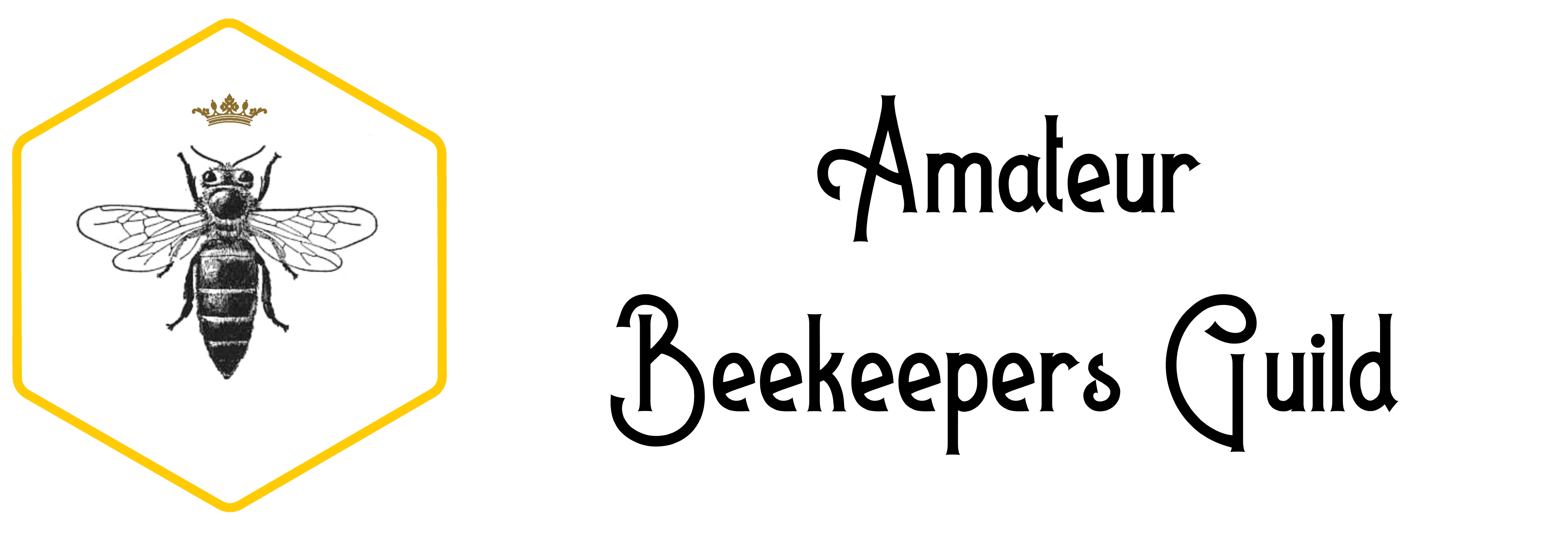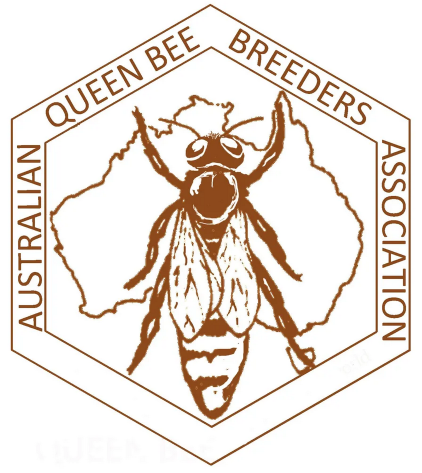Acquiring your bees
Buying a good-quality nuc box from an experienced beekeeper is an excellent way of getting started in the world of beekeeping. A strong nuc can get you up and running quite quickly, and possibly even get you a harvest of honey in its first season.
That said, unfortunately, not all nucs are made equal. Getting a poor-quality one can set you back both financially and cost you a lot of time.
It is important that you know what to look for and what questions to ask when you buy a nuc.
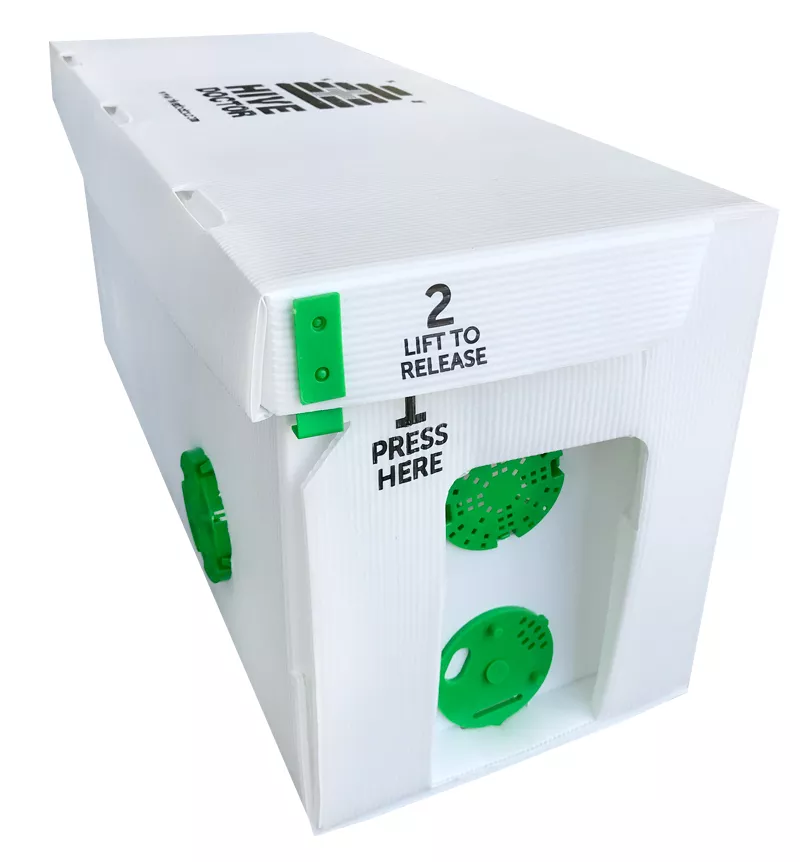
What is a nuc box?
A nuc is an abbreviated term for ‘nucleus colony’. This is a small box of bees that comprise the nucleus of the hive, the queen bee, as well as a small colony of bees and some resources such as pollen and honey.
How do you pronounce nuc?
Nuc is pronounced ‘nuke’.
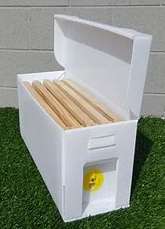
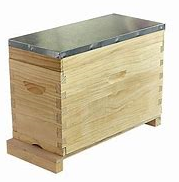
What is in a nuc of bees?
Most nucs will contain 4 or 5 frames which will comprise of bees, honey, pollen, bee brood and a queen bee. These are the core elements of a beehive and provided a nuc has all of these things, it will be able to expand and grow into a full-sized beehive.
What to look for when buying a nuc
-
Brood
There should be at least 2 or more frames of capped worker brood. This means that the nuc has lots of baby bees ready to hatch out and get to work. There should also be signs of freshly laid eggs as well as well-fed uncapped brood. The brood pattern should be strong and not patchy, and there should be a limited amount of drone brood.

A solid frame of healthy capped brood with a good laying pattern -
Honey
There should be at least one frame of honey in the nuc. This is essential for the colony as it ensures that they will have some food to survive on while they build up their strength. The honey can be either capped honey, or uncapped. A good amount of honey is 2 frames of honey for a 5 frame nuc or slightly more than 1 frame for a 4 frame nuc.

A full frame of honey or two gives the nuc some crucial food reserves -
Bee bread (pollen)
Within the nuc should also be a good supply of bee bread. This is pollen stored away in the comb and is a key source of food for young bee larvae to feed on. The colony will need this bee bread as it grows and has more young mouths to feed.

Bee bread is crucial for feeding young larvae -
Strong young queen
As mentioned, the queen is a key member and makes up the ‘nucleus’ of the hive. Every nuc should be sold with a freshly mated and proven-laying young queen. The vigour, health, and genetics of the queen will have a major bearing on the success of your beehive, so it is important to have a good queen from day 1.

A healthy and strong young queen is essential to a quality nuc -
Worker bees
In order to support the queen, the hive will need a good strong population of worker bees. The more the better, as these bees will help tend to the queen and help her raise more young bees, as well as to keep the brood warm, and to forage for food to sustain the hive. A good nuc should be brimming with bees with good coverage of bees on most frames.

Frames should have a good amount of worker bees covering the frames
Questions to ask when buying a nuc of bees
-
Where did you source the bees?
The best nucs will be those that are from splits from existing beehives. This means the bees and resources will have been taken from another hive that was already strong and the performance of the nuc should reflect the success of their parent hive. Some nuc sellers will simply box together a freshly caught swarm of bees and call it a nuc. You want to avoid this as the performance of the bees will not have been proven, they may not have had time to establish brood, pollen or honey stores, and the queen is more than likely old.
-
How old is the queen bee, and is she proven laying?
It is important to know where the queen has come from and how old she is. The best queens will be nice young queens that are freshly mated and have been proven to be laying. Ideally, the queen will have been mated with the hive nuc, or have been in the nuc for two to three weeks so that her laying pattern will have been assessed.
-
How long has the nuc been together?
Ideally, you’ll want a nuc that has been together at least a few weeks. Avoid a nuc that has just been thrown together within a few days of sale. The longer they have been a complete nucleus the more likely the queen is well established and laying, and that the colony will be moving forward. A good seller will be able to explain the age of the nuc and its condition.
Tips for nuc buyers
-
Buy two nucs to run side-by-side
Bees can be unpredictable at times and despite our best intentions, occasionally a hive may struggle. That said, most often a weak hive can be assisted by borrowing resources from another hive. This process is significantly easier if the hives are located alongside each other, hence a lot of beekeepers recommend that you have two hives instead of one.
-
Consider feeding them
It can be beneficial to feed a new nuc of bees in order to build up their strength quickly. If the bees are in an area where there is limited nectar available at the time, then they can be fed a supplementary supply of sugar syrup. Essentially, this involves feeding the bees sugar dissolved in water which (to an extent) substitutes the nectar they find in plants.
While sugar feeding is done by a lot of commercial beekeepers and hobbyists, there are many who are opposed to this as well. If you do decide to feed your bees, ensure you stop feeding them sugar syrup once you place a honey super on the hive. Sugar syrup cannot be turned into honey, and you do not want to have this mixed in with any real honey that you harvest.
-
Have realistic expectations
Speaking of harvesting honey, be realistic. While we did mention above that you could get a harvest of honey from the nuc in its first season, it is not uncommon for a nuc of bees to not produce a harvestable crop of honey in their first year. Avoid the temptation to take frames of honey from your bees before they have a substantial surplus. Remember, the bees produce honey to get them through times of the year when there is no nectar available to them. They need the honey more than you do, so be careful of how you much take and err on the side of generosity and they will repay you indebtedly later on!
-
Time of year to buy nuc
The availability of nucs is determined by seasons, with most nucs being made available in Spring. When shopping for nucs it best to plan to buy around Spring, as this is widely considered to be the best time of year to start beekeeping. Most nuc sellers will take pre-orders and advise you of when their nucs will be available for pickup.
-
Never stop learning
Much of your learning will come once you finally have some bees of your own, but we encourage you to learn as much as possible prior to getting your nuc. There is lots of information to learn from the internet, or you can go old school and invest in some quality literature such as books. Be mindful to seek support from an experienced beekeeper in your area because there are always local factors that influence your hive’s specific needs.
What do the colours on the Queen mean?
Some beekeepers mark queens to improve their ability to find them and/or indicate an age.
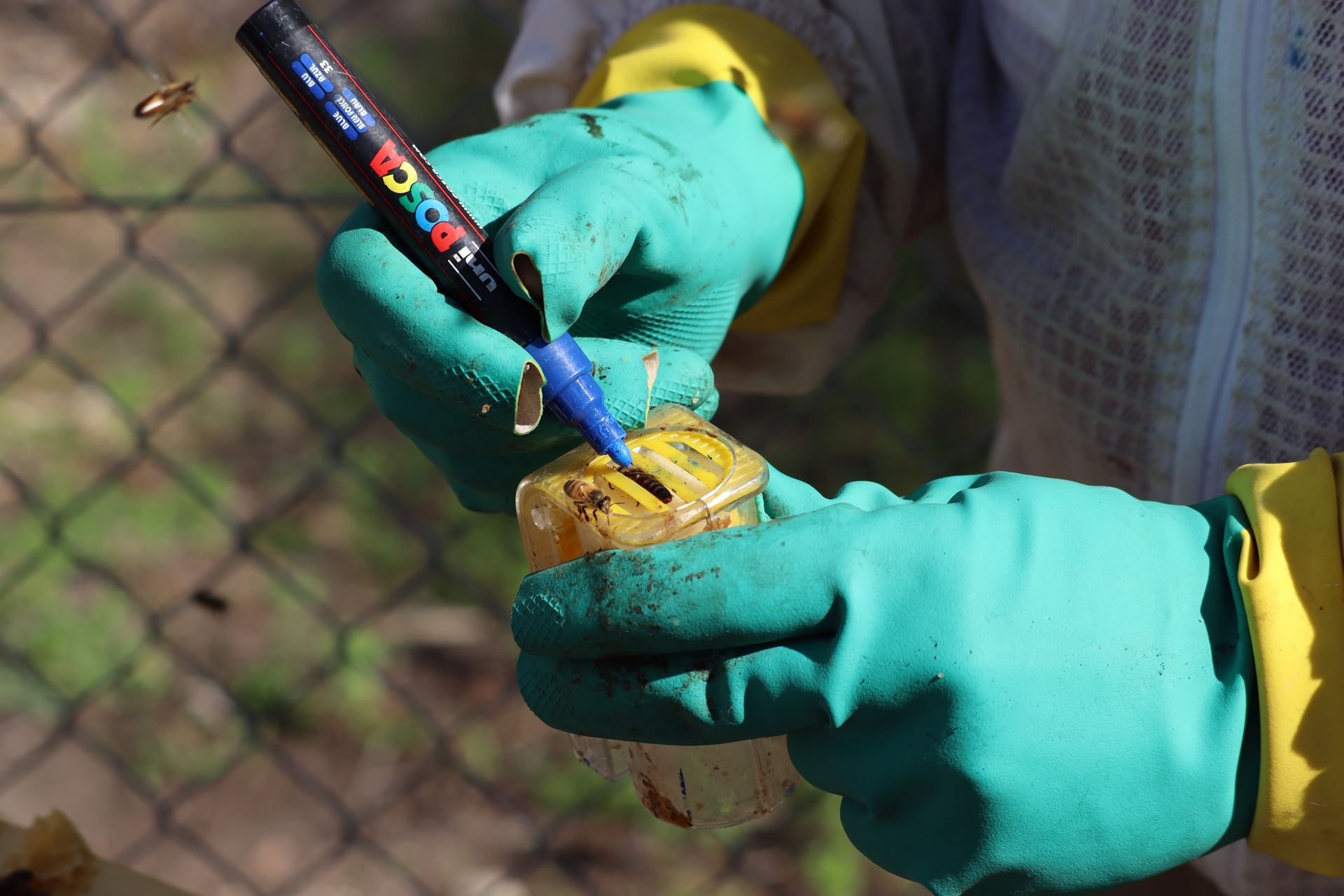
| Colour |
Year ending in…
|
|
| White | 1 or 6 | |
| Yellow | 2 or 7 | |
| Red | 3 or 8 | |
| Green | 4 or 9 | |
| Blue | 5 or 0 |
